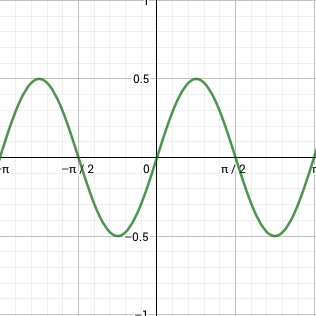Precalculus by Richard Wright
Precalculus by Richard Wright
The righteous person may have many troubles, but the Lord delivers him from them all. Psalms 34:19 NIV
Summary: In this section, you will:
SDA NAD Content Standards (2018): PC.5.1

How can the height of a mountain be measured? What about the distance from Earth to the sun? Like many seemingly impossible problems, we rely on mathematical formulas to find the answers. The trigonometric identities were often derived from real-world applications, including their use in calculating long distances.
The trigonometric identities in this section can be traced to a Persian astronomer who lived around 950 AD, but the ancient Greeks discovered these same formulas much earlier and stated them in terms of chords. The formulas that follow will simplify many trigonometric expressions and equations. Keep in mind that the terms formula and identity are often used interchangeably.
The proofs for the sum and difference formulas can be found at Wikipedia.
These identities can be used to evaluate trigonometric expressions, simplify trigonometric expressions, derive new identities, and solve trigonometric equations.
Use a sum or difference formula to find the exact value of cos 165°.
Solution
165° is not a special angle on the unit circle, but 165° = 135° + 30°, which are both special angles on the unit circle. So the sum formula for cosine can be used where u = 135° and v = 30°.
cos 165° = cos(135° + 30°)
= cos 135° cos 30° − sin 135° sin 30°
$$ = \left(-\frac{\sqrt{2}}{2}\right)\left(\frac{\sqrt{3}}{2}\right) - \left(\frac{\sqrt{2}}{2}\right)\left(\frac{1}{2}\right)$$
$$ =\frac{\sqrt{6}}{4} - \frac{\sqrt{2}}{4}$$
$$ =\frac{\sqrt{6}-\sqrt{2}}{4}$$
Find the exact value of \(\tan \frac{7π}{12}\).
Answer
\(-\sqrt{3} - 2\)
Find the exact value of sin 200° cos 50° − cos 200° sin 50°.
Solution
This looks a lot like the right-hand side of the sine difference formula. Use it with u = 200° and v = 50°.
sin 200° cos 50° − cos 200° sin 50°
= sin(200° − 50°)
= sin 150°
$$=\frac{1}{2}$$
Find the exact value of cos 100° cos 35° − sin 100° sin 35°.
Answer
\(-\frac{\sqrt{2}}{2}\)
Derive a formula for cos(t + π).
Solution
Because angles are added in the cosine function, use the cosine sum formula with u = t and v = π.
cos(t + π)
cos t cos π − sin t sin π
cos t (−1) − sin t (0)
−cos t
Derive a formula for tan(x + π).
Answer
tan x
Verify \(\tan x \sin\left(x + \frac{π}{2}\right) = \sin x\)
Solution
The left side is more complicated, so start there. Use the sine sum formula with u = x and \(v = \frac{π}{2}\) to simplify the sine expression.
$$\tan x \sin\left(x + \frac{π}{2}\right) = \sin x$$
$$\tan x \left(\sin x \cos \frac{π}{2} + \cos x \sin \frac{π}{2} \right) = \sin x$$
tan x (sin x (0) + cos x (1)) = sin x
tan x (cos x) = sin x
Rewrite tan x as \(\frac{\sin x}{\cos x}\).
$$\frac{\sin x}{\cos x} \cos x = \sin x$$
The cosines cancel.
sin x = sin x
Verify \(\cos\left(x - \frac{π}{2}\right) = \sin x\).
Answer
\(\cos\left(x - \frac{π}{2}\right)\) \(= \cos x \cos \frac{π}{2} + \sin x \sin \frac{π}{2}\) \(= \left(\cos x\right)\left(0\right) + \left(\sin x\right)\left(1\right)\) \(= \sin x\)
Find all the solutions in the interval [0, 2π) of \(\sin\left(x + \frac{2π}{3}\right) + \sin\left(x - \frac{2π}{3}\right) = 1\).
Solution
There are two places to use sum or difference formulas. In both u = x and \(v = \frac{2π}{3}\).
$$\left(\sin x \cos \frac{2π}{3} + \cos x \sin \frac{2π}{3}\right) + \left(\sin x \cos \frac{2π}{3} - \cos x \sin \frac{2π}{3}\right) = 1$$
The \(\cos x \sin \frac{2π}{3}\) terms cancel out, and the \(\sin x \cos \frac{2π}{3}\) terms add together.
$$2\sin x \cos \frac{2π}{3} = 1$$
$$2\sin x \left(-\frac{1}{2}\right) = 1$$
−sin x = 1
sin x = −1
$$x = \frac{3π}{2}$$
Find all the solutions in the interval [0, 2π) of sin(x + π) + sin(x − π) = 1.
Answer
\(\frac{7π}{6}\), \(\frac{11π}{6}\)
Helpful videos about this lesson.
